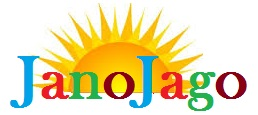Computer Objective Question 91) The instructions that tell a computer how to carry of the processing tasks are referred to as computer
Ans:- (A) programs 2) RAM can be thought of as the ……. For the computer’s processor.
Ans:- (E) None of these 3) C, BASIC, COBOL, and java are example of…… languages.
Ans:- (B) computer 4) An area of a computer that temporarily holds data waiting to be processed is
Ans:- (B) Memory 5) A...... is a microprocessor-based computing device
Ans:- (A) Personal computer 6) You use a (n)......such as a keyboard or mouse, to input information.
Ans:- (B) Input device 7) The term..... Designates equipment that might be added to a computer system to enhance its functionality.
Ans:- (D) peripheral device 8) An e-mail account includes a storage area, often called a(n)
Ans:- (C) mailbox 9) Data becomes..... when it is presented in a format that people can understand and use.
Ans:- (3) information 10) A set of computer programs that helps a computer monitor itself and function more efficiently is a/an.....
Ans:- (B) System software 11)......Is the ability of a device to “jump” directly to the requested data.
Ans:- (A) Sequential access 12) The......is the amount of data that a storage device can move from the storage medium to the computer per second.
Ans:- (C) Data transfer rate 13) A....... converts all the statements in a program in a single batch and the resulting collection of instruction is placed in a new file.
Ans:- (B) compiler 14) One thousand bytes is a
Ans:- (A) kilobyte 15) A...... is an additional set of commands that the computer displays after you make a selection from the main menu.
Ans:- (B) submenu 16) Information kept about a file includes.
Ans:- (D) size 17) ...... Provides process and memory management services that allow two or more tasks, jobs, or programs to run simultaneously.
Ans:- (A) Multitasking 18) The ALU perform......operations.
Ans:- (A) arithmetic 19) A (n) ..... is software that helps a computer control itself to operate efficiently and keep track of data.
Ans:- (E) None of these 20) Computer manipulate data in many ways, and this manipulation is called
Ans:- (A) upgrading |

